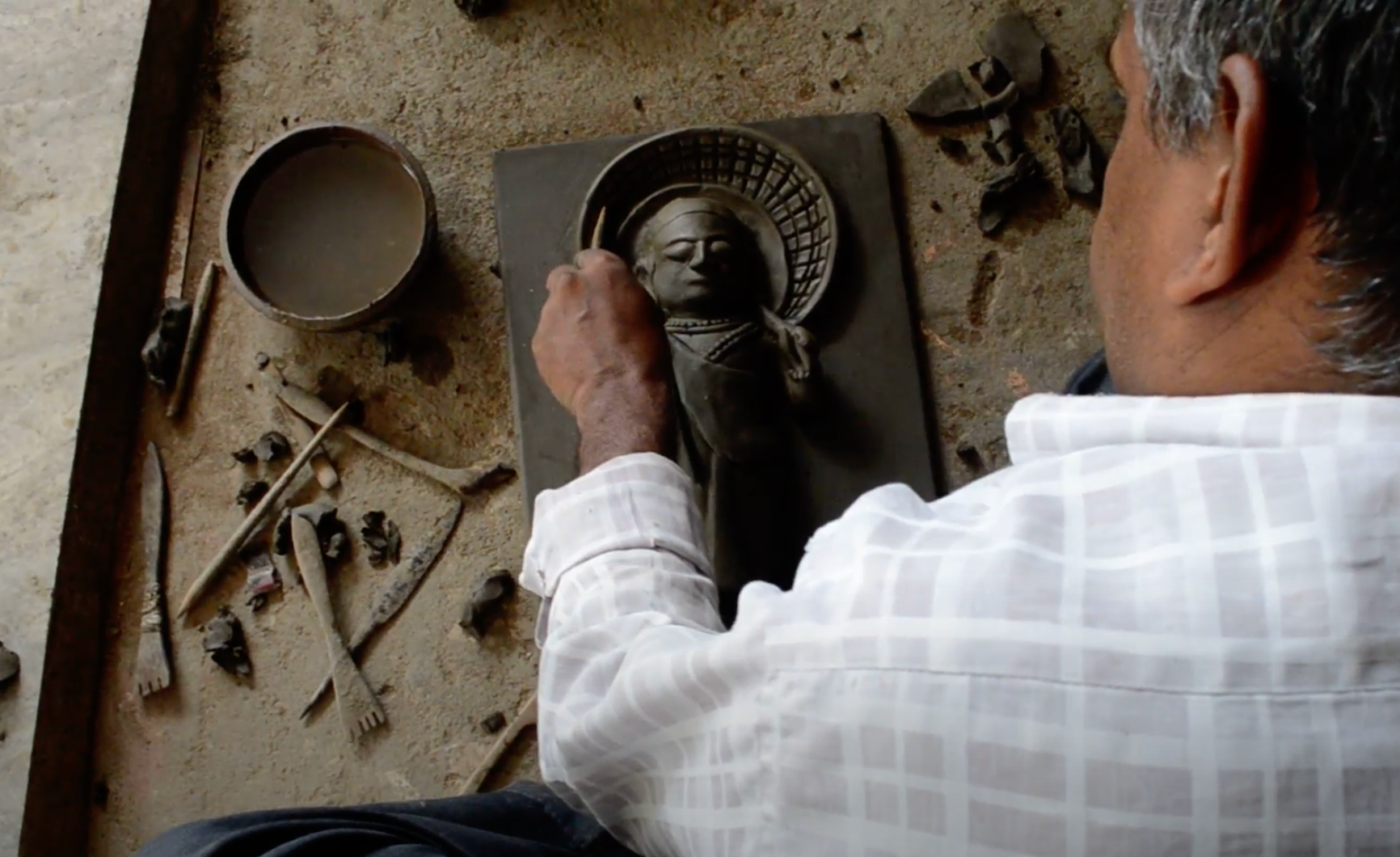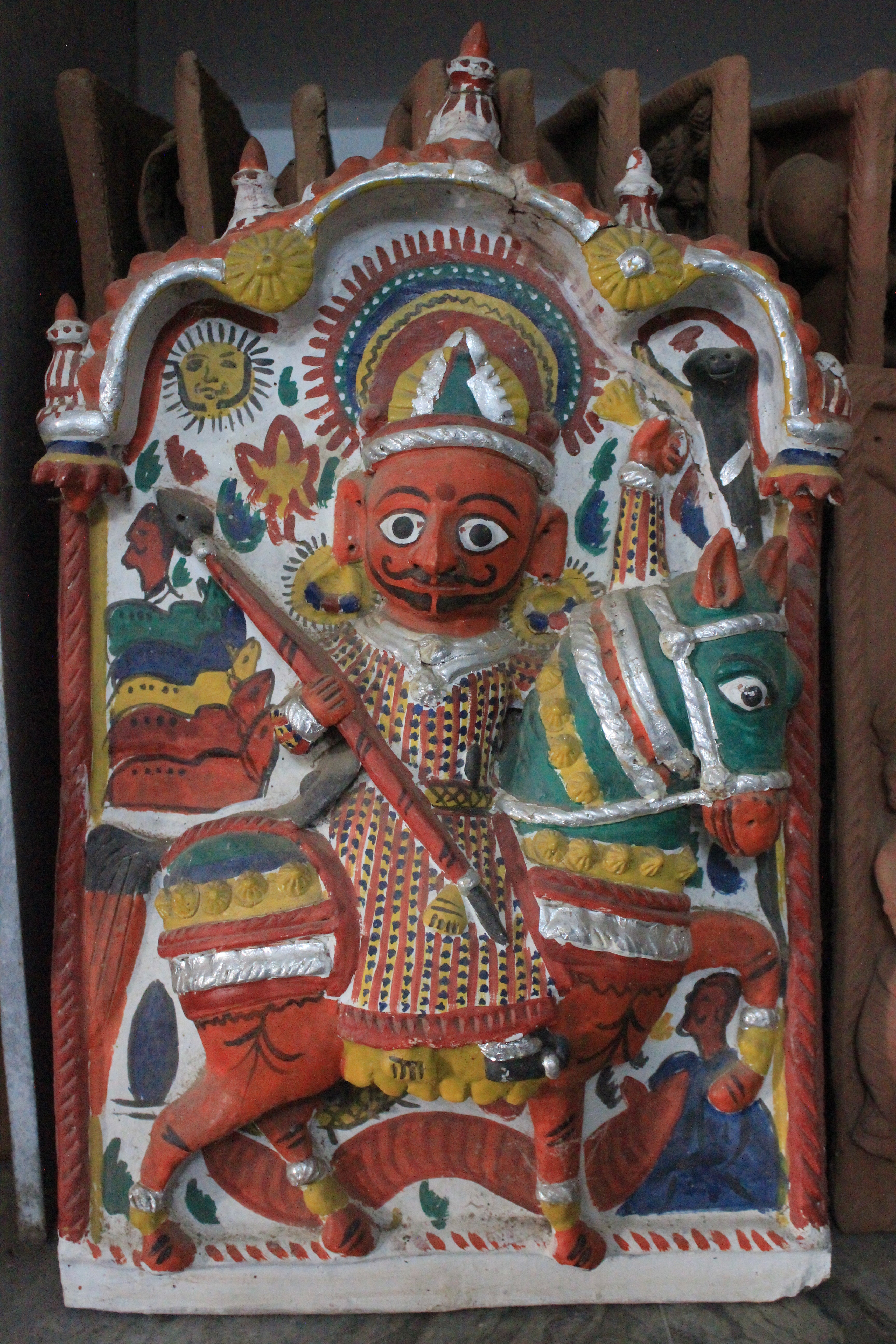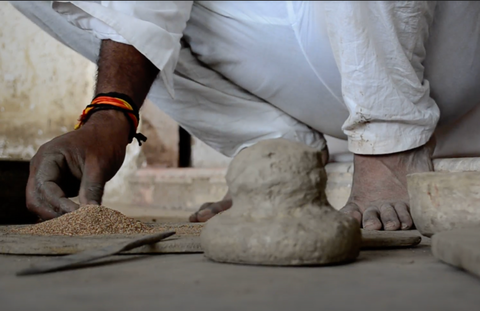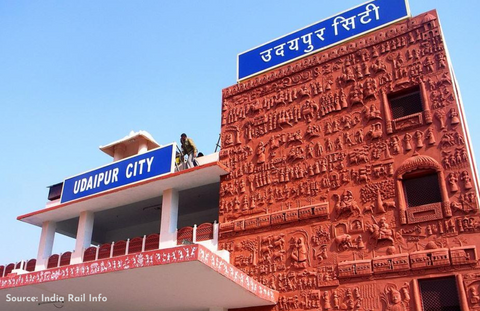Do you remember that one summer holiday where you stumbled upon wet sand after the rains and then proceeded to make little imaginative shapes? If you do recall such an event, your days were much similar to mine! The feeling of creating something new from soil with your bare hands is a therapeutic one. Even in recent years, especially heightened with the pandemic, art from clay has continued to serve as a safe space for individuals eager to reconnect and realign themselves.
But, what if I brought to your attention the presence of communities who for over 5000 years have centred their lives, their narratives, their histories around clay? Let us delve then, into the Molela village situated on the banks of river Banas in the Rajsamand district of Rajasthan, India.

Home to a distinct kind of clay craft where beaten clay is moulded onto titles depicting local deities especially Devanarayan (a folk deity memorialised through martial epics), Kaldeva, Gordeva, and Nagaraj (the serpent god), this clay tradition is popularly known as "the Molela Terracotta Art." Carried across the ages through the peasant-potters caste (kumhars), Molela terracotta involves both devotion and skill in its creative expression.

Throngs of devotees and artisans from the Garijat, Gujjars, Bhil, Mina, and Garasiya communities of Rajasthan, Gujarat, and Madhya Pradesh have collectively kept alive the tradition through their patronage and practice. Clay titles with their respective motifs on the surface, serve to symbolise a range of emotions for the person or group who requests the potter to make them. From boons, to vows, to plead for health, wealth, gratitude— prayers are offered to these tiles who become ‘shrines’ whereupon worshipers offer libations.

Dinesh Kumhar who proudly represents the 15th generation of potters in Molela, explains the process of making terracotta plaques as a series of steps which involves sourcing the 'right' kind of soil and following a well-practised coded pattern of shaping the clay. In an interview with Rashmi Pratap, Kumhar states that clay is sourced from two ponds in two villages, respectively Aasula pond in Molela and the Solah pond in Sema. The clay then is mixed with 5-10% horse or donkey dung as well as rice husk to create the right consistency. Rudimentary tools like pindi (a round smooth stone) and badli (a chisel-like tool) are used to make square tiles which are supporting structures onto which the scene is made. There are no pre-made moulds. Everything from kneading, throwing, cutting, and pinching is done by hand. If the plaques are to retain a natural sandy hue, red geru with a glue mixture is applied before firing it in the open circular kiln called awara. Other colours like white are obtained using a mineral called Khadi, and black is by mixing carbon obtained from burning coconut skins and bread pans.

Much like the organic way an authentic terracotta piece is made, the art itself in contemporary time has come to reflect an organic worldview that is being erased even as it is being documented. Finished artworks by master artists such as Dinesh Chandra Thakur depict women at casual daily work in village settings. Images of fetching water, combing hair, taking walks, driving cattle home, cooking roti etc. dot the smooth sandy landscapes of terracotta artworks. Tiles usually measure up to 6 x 6 inch build up like patch-work to go about 4ft by 4ft or even 9ft depending on commissions. For instance, a terracotta wall outside the Udaipur city railway station stands as tall as the building itself!

In a rhythmic lyric sort of pattern, soil from the rivers, inspired creation and art that amalgamates the natural environment and scenes from reality. In today's terracotta murals, the viewers will not be surprised to see a little clay man riding a scooter, or a group of little clay girls walking to their school. Dogs, cats, fishes, birds, deers also incorporate this busy scene. Molela art then seems to almost come alive and thrive in this bustling space forever caught between what is home and what is the world.
References:
- Terra Cotta of Molela
- Molela: Rajasthan’s terracotta plaque art patronised by Bhil, Mina & Garasiya tribal communities
- On Dinesh Chandra Mohanlal Kumhar: Molela Terracotta
- https://garlandmag.com/article/votive-horses-of-poshina-gujarat/
- Dhanak Adivasi Art of Non-Stick terracotta Cookware with Lac Coating - Prakati India
- The Sustainable Way of Life
- https://caravanmagazine.in/perspectives/adivasi-modernity-paris
- https://lepakshihandicrafts.gov.in/terracotta.html























